When it comes to this game, space is at a premium. More and more cool special event buildings are released, you age-up to a new era and the buildings get bigger and bigger, you add in tons of great buildings… and before you know it you have no room for anything else! Not only can you not rotate buildings (a feature Inno promises they will never implement, so don’t ask), but some of the buildings are really odd sizes. So this begs the question, how to make it all fit?
Even before you get into re-arranging your city (which, by the way, is a lot easier now that the reconstruction tool is available), you have to decide what you are and are not keeping. Get ready to pull a Marie Kondo on your city, because usually the biggest issue with space is having too many buildings that are not serving a purpose worthwhile of taking up that valuable real estate. Ultimately, knowing what to keep and what to toss doesn’t come down to how it makes you feel though, at least not for this game; it comes down to what furthers your city towards your play style, and what is holding you back by taking up space you could use for something that does help you.
There’s certainly no one way to build a city, nor is there one perfect way to lay it out. So this article is going to focus on some specific tips to help you make the most of the limited space you have to work with, and to make it even simpler, those tips will be broken up into some sections for easier reading.
Determine Your Play Style
Before anything else, figure out what your play style is. This usually falls under one of a few of categories (or a combo of sorts):
- Goods-Based GE/GvG Goods Farmer
- This play style will focus mainly on using goods to get by wherever possible. You probably negotiate most, if not all of GE; you farm goods for the treasury to help with GvG if you’re in that style of guild; and you might negotiate to gain sectors on the continent map. In essence, you hardly ever fight. Someday, you might even have enough of a goods empire amassed to be a seller of goods.
- Fighting-Based GE/GvG Fighter
- This play style will focus mainly on brute strength to get by wherever possible. You probably fight most, if not all of GE; if your guild participates in GvG you like to tear up the maps fighting; and it would be unthinkable of you to negotiate the continent map. You might even be your neighborhood’s worst nightmare. In essence, the only thing you need goods for is the tech tree and certain quests. You rarely use them elsewhere, except to maybe trade with guild mates to help them out.
- Fighting-Based GE/GvG DA Farmer
- This play style is one that enjoys fighting, but maybe not as much as the previous style. You like to fight as much of GE as possible, if not all of it; and you might even fight a lot of the continent map. Occasionally, you might ransack your neighborhood, but it’s not as common for you. If your guild does GvG, you’re likely to help by planting DAs because you’re not as keen to fight on the maps (or you’re mobile based and it’s too difficult to fight with your device). Troops and attack are important to you, but you’re not adverse to using goods here and there to help yourself along.
- Balanced (with a subtle preference to goods or fighting)
- Likely the most difficult play style to achieve, a balanced player strives to use troops and goods equally. If this is you, you’re likely a jack-of-all-trades, master of none. This is a-okay in this game, because it means you’re far more self-sufficient usually than any other player. Despite that, you’re going to have a preference to either goods or fighting, however slight it might be. You want the troops to be able to fight as you please, and you also want the goods to toss around as you want and/or need.
Depending on how you play the game will determine what buildings are suitable for your city. If you’re someone who doesn’t need a lot of goods because you fight your way through everything, then you’re not going to want a lot of goods-producing items. If you’re someone who negotiates all of GE and doesn’t fight at all, then you probably don’t want barracks, and you definitely don’t need a lot of the buildings that boost attack bonus and nothing else. This makes a big difference, so deciding this first and foremost sets the tone for everything else.
If it isn’t Helping You, Toss It
This is the part where the tough decisions often come in, and no one is perfect at this. Start by accepting that there will likely be some building, at some point and time, that you absolutely have to have for aesthetic purposes only. You just think it looks really cool in your city, and you cannot bear to part with it. It’s fine. One or two of these won’t totally mess you up. A lot of them will.
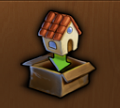 So if you’re really lucky, you have some Store Buildings handy. That way some of these buildings that you need to be rid of but can’t purchase again (event or special buildings, basically) can be put back into your inventory… forever. The inventory has no limits, so keep those special pixels locked away where they won’t take up that valuable city space. Depending on where you’re at with your city, you may or may not have enough of these bad boys to pick up everything you want to store… so you have to determine: can you do it in stages as you earn them, or do you have to bite the bullet and delete something? It’s a tough decision. Knowing that it can happen, going forward into the future think about how the building might serve you in the long-run before planting it in your city; that way you might avoid the heartache of having to delete something you love but doesn’t stand up to the test of time, because you lack a store building.
So if you’re really lucky, you have some Store Buildings handy. That way some of these buildings that you need to be rid of but can’t purchase again (event or special buildings, basically) can be put back into your inventory… forever. The inventory has no limits, so keep those special pixels locked away where they won’t take up that valuable city space. Depending on where you’re at with your city, you may or may not have enough of these bad boys to pick up everything you want to store… so you have to determine: can you do it in stages as you earn them, or do you have to bite the bullet and delete something? It’s a tough decision. Knowing that it can happen, going forward into the future think about how the building might serve you in the long-run before planting it in your city; that way you might avoid the heartache of having to delete something you love but doesn’t stand up to the test of time, because you lack a store building.
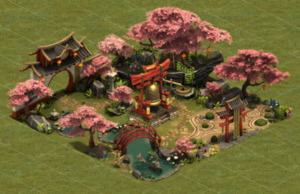 Aside from random buildings not helping you, incomplete sets/upgrades are also typically pointless. As you’re winning them in an event, avoid planting them until you know you have enough pieces/upgrades to make it worthwhile. It might seem like you’re missing out on a few extra days of collecting the goodies, but really… you didn’t have them prior to the event starting, missing a few extra days to ensure you don’t have to waste a store building (or more, if there are multiple pieces) to pick something up that you end up not completing enough to be worthwhile won’t hurt. If at the very end of a quest line you get screwed over by real life or something unpredictable, you’ll be really glad you didn’t put down an incomplete set you have to pick back up, or similar, because you couldn’t win the last of what you need. Trust me on this one. Furthermore, and this is discussed more down below, incomplete sets are odd shapes, and odd shapes are terrible. If you can avoid an odd shape, do.
Aside from random buildings not helping you, incomplete sets/upgrades are also typically pointless. As you’re winning them in an event, avoid planting them until you know you have enough pieces/upgrades to make it worthwhile. It might seem like you’re missing out on a few extra days of collecting the goodies, but really… you didn’t have them prior to the event starting, missing a few extra days to ensure you don’t have to waste a store building (or more, if there are multiple pieces) to pick something up that you end up not completing enough to be worthwhile won’t hurt. If at the very end of a quest line you get screwed over by real life or something unpredictable, you’ll be really glad you didn’t put down an incomplete set you have to pick back up, or similar, because you couldn’t win the last of what you need. Trust me on this one. Furthermore, and this is discussed more down below, incomplete sets are odd shapes, and odd shapes are terrible. If you can avoid an odd shape, do.
How do you Know if it’s Worth the Space?
You’ll probably see this referenced elsewhere on the site, but knowing if something is worth the space comes down to how much it produces per square that it occupies. For example, a Shrine of Knowledge takes up four total squares and produces a certain number of coins (based on era) and potentially a FP (if it’s motivated). To give a good example, lets pretend we have a SOK from the Industrial Era. It makes 4,528 coins a day, and if motivated, a FP. So that’s 1,132 coins per square (4,528/4=1,132), and 1/4 of a FP per square. You would then compare this to a different FP producer, for example, to decide what one was better (if you were thinking of removing a few SOKs perhaps to put in something else).
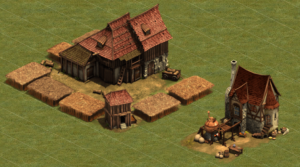 One of the best examples comes in the form of production buildings. For this example lets look at the first era that offers a really large production building, and a really small one: High Middle Ages.
One of the best examples comes in the form of production buildings. For this example lets look at the first era that offers a really large production building, and a really small one: High Middle Ages.
The Farm is a 4×5 production building that makes 730 supplies an hour, base. So 4*5=20 squares used. 730/20=36.5 supplies per square an hour.
The Alchemist is a 3×2 production building that makes 180 supplies an hour, base. So 3*2=6 squares used. 180/6=30 supplies per square an hour.
Now, The Alchemist seems to be slightly worse off than The Farm, but by very little. So when it comes time to determine what to put in your city, you now know that it might be worth the trade-off to just run a few little Alchemists, instead of a a few large Farms. Or, if you don’t have the space for a Farm, you know that an Alchemist isn’t a terrible alternative. This is especially important once you start winning event buildings, because those often give supplies too and you don’t need to have as many era-specific producers around. Or, for preparing to do an event when you need to do all those 4-hour and 8-hour productions. Having a lot of little producers makes this easier than having a lot of big ones (and when you get up much higher in era, a lot just temporarily plant Blacksmiths).
That’s just one example for supplies. You can use it for any building in the game. In fact, the comparison was made for defense buildings too, if you want to look at that breakdown for space. It seems like a lot of math, but after a while it becomes intuitive, promise.
Less is More when it comes to Roads
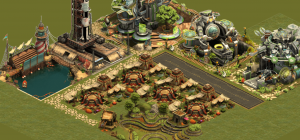 Roads are necessary for connecting almost all buildings to the Town Hall., and as you build organically you’re going to end up putting in a lot of roads. It’s like a rite of passage, we’ve all been there. The question is how long you stay there. Roads are one of the biggest space hogs in the game, especially when you hit Progressive Era and have to account for a two-lane road that also has to connect directly to the Town Hall. How obnoxious.
Roads are necessary for connecting almost all buildings to the Town Hall., and as you build organically you’re going to end up putting in a lot of roads. It’s like a rite of passage, we’ve all been there. The question is how long you stay there. Roads are one of the biggest space hogs in the game, especially when you hit Progressive Era and have to account for a two-lane road that also has to connect directly to the Town Hall. How obnoxious.
The good thing is, you don’t have to stay a slave to your roads forever! There’s no one right way to put your roads in, but the first thing to remember is that you can put your Town Hall anywhere. This means you can position it so that the start point of your roads works best for the buildings you have in your city. So experiment with its placement, see how it goes, and don’t be afraid to move it around as you reorganize your city again, and again, and again…
Next, remember that if it needs to be connected to a road, you only need one piece of road touching it to make it work. This is even true with the two-lane roads. So long as one square of that two-lane highway touches your building, you’re golden; even if the building has to be on a two-lane road to survive. Speaking of that, items that need a two-lane road have to be placed on the highway, but items that just need a road (aka the stuff that’s a 1×1) can be placed on either kind of road. So if it buts up to the two-lane highway, you don’t have to also place regular road for it. You’re good as-is.
As far as the two-lane roads go, too, you don’t need to use all highway in your city. You can use just a few squares of two-lane road for the few buildings that absolutely have to have it, and then the rest can be regular old 1×1 road. You’ll save a lot of space by not using all highway all the time. Seriously, rip out all the roads in your city in reconstruction mode and see all the wasted space you could maybe get back for a shiny new event building. You’re welcome. 😉
Finally, with roads, less is more and straight is the name of the game. Try to use as few, straight pieces of road as you can. Again, you only have to have a building touched by one piece of road, so be creative with this as you’re able.
Decorations are Awful for Multiple Reasons
Every decoration or cultural building you have in your city is not only taking up valuable space, but it gets to be motivated too. Sure, they look pretty and it’s fun to fill in gaps, but at what expense? Eventually, you will tear them down for something else, so why waste the supplies and gold building them now, or the store building later to put away something special?
Here’s a concise list of why your decorations need to go:
- They will suck up your aid. This isn’t as big an issue in the early eras when you don’t have as many buildings and everyone is eager to aid you to get BPs for their first GB, but as you age-up and get more and more special buildings that require aid to produce the good stuff… you’re going to feel the pain of too many decorations. For every decoration you have, that’s an aid that maybe could have gone to motivating something better, like a Tribal Square or a Hall of Fame instead. You know… things that do something for you. Not that happiness isn’t important, but if you’re relying on having decorations aided to maintain your citizens being enthusiastic, you need to make some changes anyways because that’s no way to run a city.
- They are space hogs. Seriously. There are plenty of fantastic GBs that serve the purpose of giving you happiness and providing something else that can be leveled up to provide far more happiness than any decoration can hope to hold a candle to. Replacing useless decorations with useful GBs should be a goal.
- It’s far more work to rearrange your city. It may seem ridiculous that this is a concern, but as you age-up and the buildings you need get bigger and weirder in shape, this really matters. You’ll find yourself doing reorganization more frequently, and having to click on all those little decorations and move them around and squeeze them in gets really old, really fast. It’s obnoxious enough moving a ton of SOKs around, let alone all your Wind Turbines.
Aside from the aid, this also holds true for things like Victory Towers and even Watch Fires/Ritual Flames. There are some out there who, for the sake of valuable space, don’t have any home defense boost outside of maybe some passive set bonuses. Those are the people who believe a good defense is a good offense, but it’s certainly an option. So really, really think about all those little space hogs, do you really need them?
Is there a Great Building for that?
It was touched on briefly, but many times there’s a GB that can take the place of one or more items in your city to do the same function, but better. Houses can turn into Habitat and/or Innovation Tower. Tons of decorations can be taken care of by Alcatraz, Frauenkirche of Dresden, Hagia Sophia, and more. Usually, you can roll a whole spread of buildings into one better GB which can be leveled up with FPs to just get more and more impressive.
Likewise, there are some specialty buildings that can take the place of other items to do a task better in your city. For those who don’t need as many goods, you might get away with just Tribal Squares and questing to supply yourself. If you’re a fighter who is going to take Alcatraz to new heights, you might find Terrace Farms are better than Hagia Sophia for FPs.
Depending on your play style, there are a slew of buildings you can earn to take up less space while doing a better job than everything they’re replacing. You just have to determine what those switch-outs are. It’s especially awesome when the building you pick to replace others doesn’t need to be motivated to give you all the goodies.
Tetris is your Friend
If you hated this game, you probably also hate trying to make your city fit together nicely. Truth is though, you have to piece things together in the way they best fit. Sometimes this means filling in gaps, and sometimes this means figuring out how to work with where you stuck expansions.
On the building-placement front, it’s always a good idea to try and keep like-sized buildings together. For example, the Innovation Tower and Terracotta Army share a dimension, so trying to match that up means one straight road could pass them both by. Or, if you’re the type of person who does spend money on the game and got a few Pirate Ships (event item), you would be wise to keep them all together when you organize. Which side you match up is going to depend on what your space looks like, which brings us to expansions.
As you earn expansions and start to layout your city, really try to think ahead to what shape will best serve you. Like roads, straight lines are your friend. However, like odd-shaped buildings being a major suck to the game of Tetris, having a long rectangle for a city really can limit your options. The best plan is to try and go for more of a square when you’re laying out your expansions. You may lean towards rectangle here and there, but so long as you try to work both sides somewhat equally, you’ll never get that long, skinny rectangle that makes reorganization more difficult. In the beginning too, if you don’t need the expansions it’s okay to hoard them until you do. Sometimes it’s hard not to fill up space that you just arbitrarily have, or you don’t know where you might need one next. You don’t have to plant them right away. If your city is chugging along just fine without that new expansion the continent map gave you, then wait. There’s no harm in not making a rash decision.
So To Review…
In essence, a good city layout comes down to a few simple guidelines. There’s a lot of information here, so lets summarize to conclude:
- Get rid of anything that doesn’t work for your play style.
- Use roads wisely and sparingly. Straighter is better, less is more.
- Don’t plant incomplete sets or upgrades that aren’t worthwhile.
- Know the worth of the space when comparing what building to put in.
- There’s probably something better than that decoration for that space.
- Group like-sized buildings together.
- Expand wisely, and don’t make a long rectangle.
Finally, try to think ahead. It’s fun to build organically, but at some point you’ll hit a wall where it backfires. Having an idea of what lies ahead will allow you to try and plan for it a bit. For example, if you know you don’t want to have houses anymore but need Capitol as a stepping stone, then don’t level Capitol anymore than necessary before you can put in Habitat or Innovation Tower (which are both far better population per space per level). Essentially, only do what is absolutely necessary to achieve the next step, to say supplies, coins, FPs, and more.
Most importantly, enjoy it. Using space efficiently is a big part of the game, but so is having fun. As mentioned above, if you have a couple buildings in your city just because you like them, it’s okay. Just understand that they’re not helping you strategically and move on.
As a last note, if you are on a PC, you can use City Planner to work on your reorganization first, and then implement it with the reconstruction tool. Happy planning!

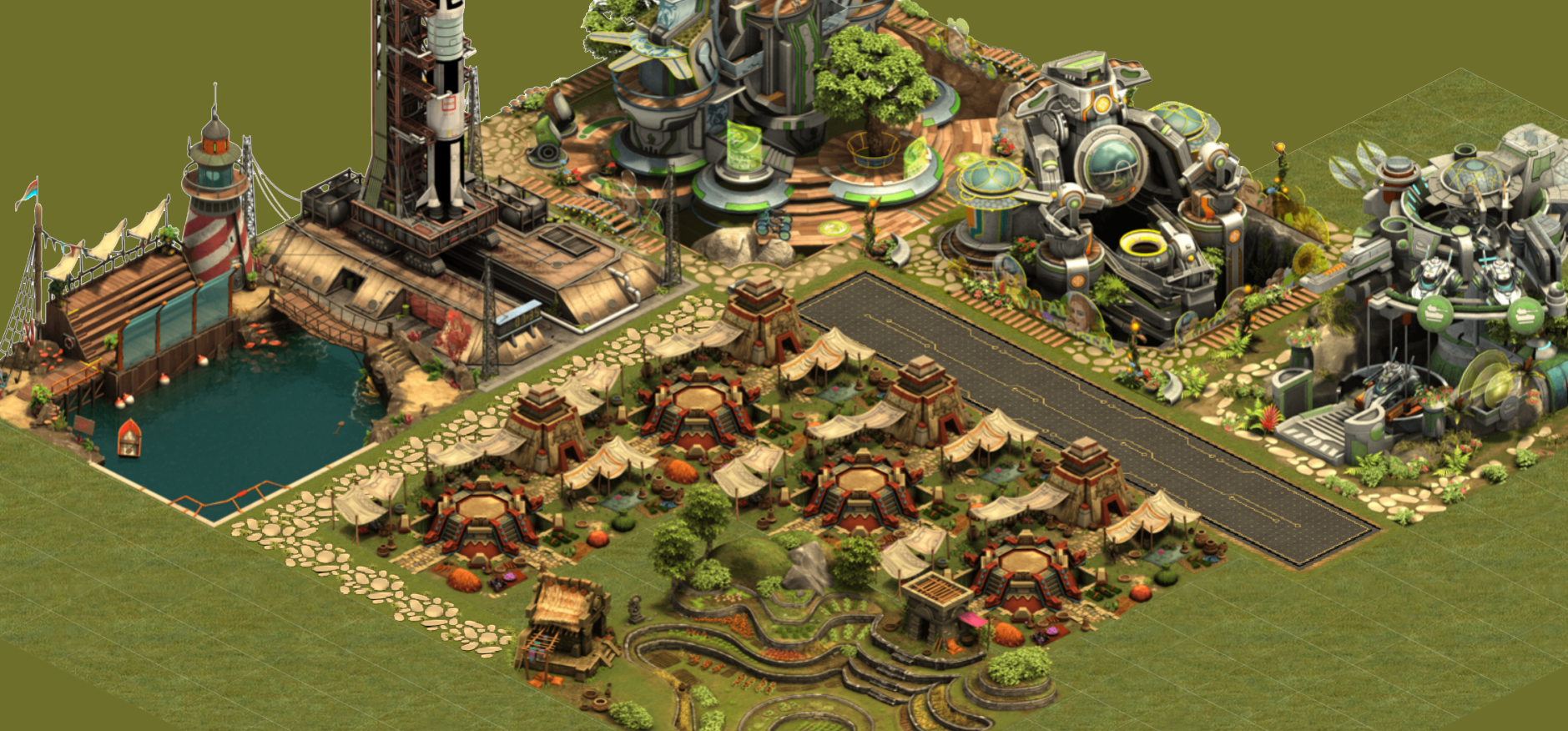
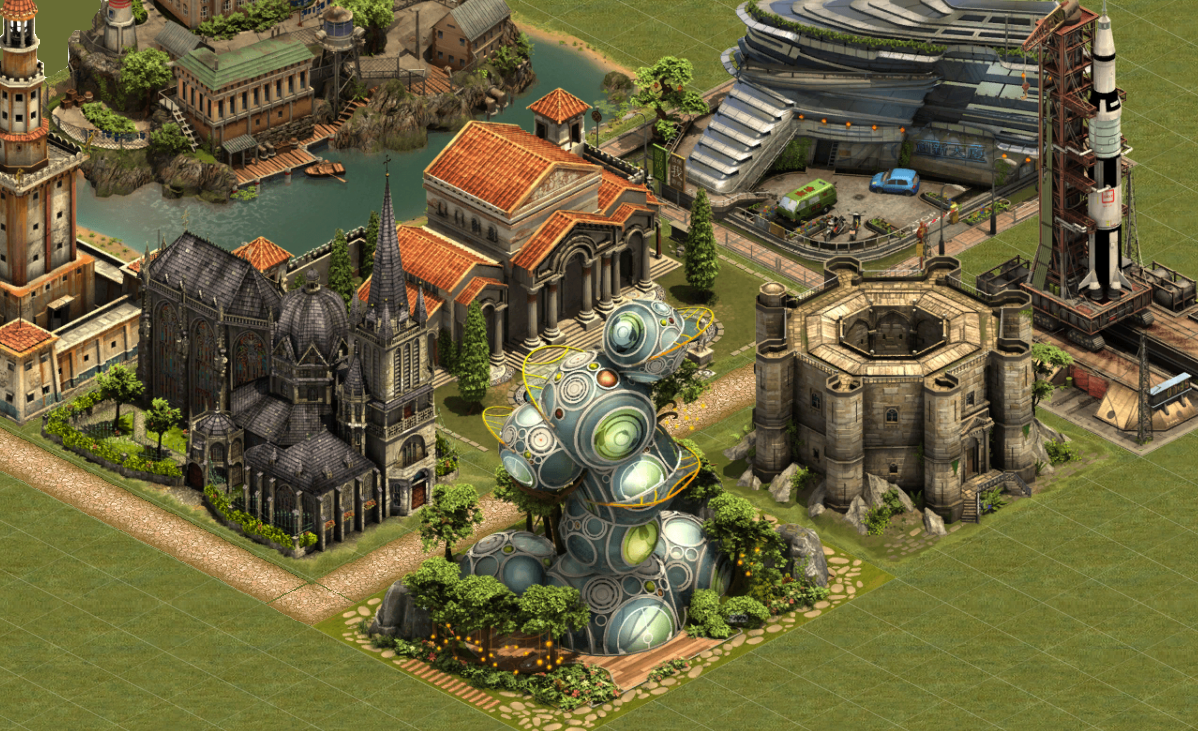
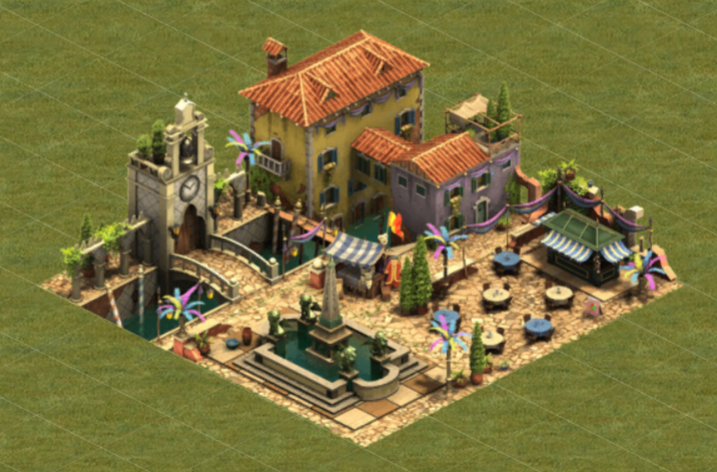
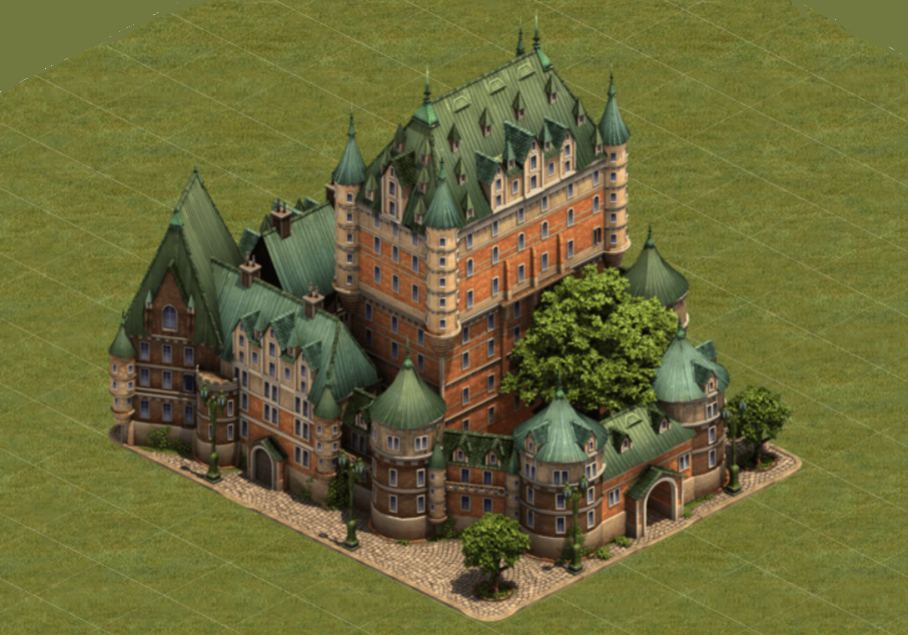
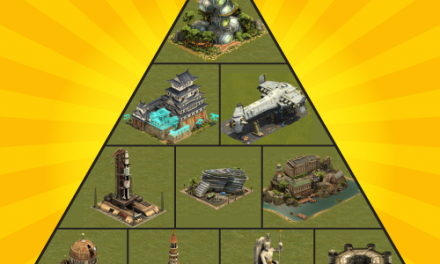
Great article!
Btw, think I’m in love
From my experience, a couple of other things to take into account. I will use the Farm-Alchemist example:
1) A building always uses more space than the building itself: Population+Happiness. Alchemist produces less supplies per square, but more supplies per inhabitant. That means you will use more space for the building itself, but less space for houses and happiness.
2) Small buildings are normally worse: If you must decide between 2 buildings with similar characteristichs, you should normally choose the big one. Why? Same reason why you should not build decorations. A big farm needs to be motivated only once, while 4 alchemists need to be motivated 4 times. If you produce in 8h packs, it’s 3 motivations vs 12. It’s better to have 3 slightly worse buildings if that makes sure they are motivated.
Definitely good things to be mindful of. I think as you age up and get event buildings and good GBs, your second point becomes less of a concern; but it’s absolutely valid in earlier eras. 🙂